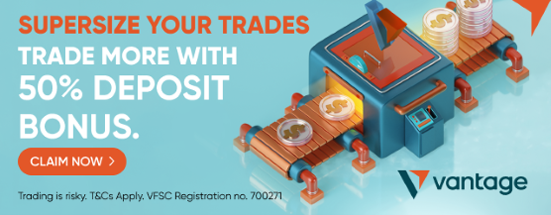
Going into the supermarket, looking at your electricity bill or filling up your car with gas, there is one thing that you can’t help but notice, the pricåes are rising. While these are happening, you might notice that you are also paying for higher interest rates on your mortgage. What is happening?
So while the prices are rising, the interest rates are also rising. Is this coincidence? Or is there Science (or Economics) behind it? Is the central bank pushing our pockets more into debt or does this actually solve or limit the impact of inflation?
What is inflation and how is it measured?
Inflation is best described as the rise in price. This is the rate which shows the decline of purchasing power over time. In layman’s terms, the currency that we own buys less than it did during the prior period. The most popular indicator of inflation is the Consumer Price Index (CPI) which measures the change in percentage in the price of a basket of goods and services consumed by households (consumers).
In simple Mathematics, this is computed using this equation:
Year-on-year Inflation = Price (Year now) – Price (Year prior) x 100 / Price (Year prior)
The prices are collected from a wide range of sources such as retail stores where consumers usually shop. The basket of goods are chosen based on how much and what the household spends their income on. If a certain item occupies a bigger percentage on the household’s expenditure, it weighs larger in the CPI.
What is the ideal inflation rate?
As each country’s economic profile is different from each other, there is no single figure to represent an ideal inflation rate. However, in general, advanced economies such as the United States of America, United Kingdom and Japan usually set their inflation rate target at around 2%.
It is a long story how most central banks settled at 2% inflation rate target. For now, let us focus on the effects of inflation. An inflation rate below 2% signifies low demand for goods and services which tends to slow economic growth and wage growth. On the other hand, a high inflation rate (like what we are experiencing now) manifests high demand for goods and services which lowers the purchasing power. This includes assets such as savings, Treasury notes and pension. Assets like real estate however usually keep up with inflation.
What is the interest rate?
Interest rate is the amount a lender charges a borrower. This can also be applied to the amount a depositor earned from a savings account or certificate of deposit.
How is the interest rate computed?
Interest rates can be simple or compounded. In regards to this article, we will be using simple interest rate which is calculated using this formula:
Simple interest = Principal x Interest rate x Time
This formula can be applied to both borrowing and saving. The only difference is borrowers pay this amount while depositors earn this amount.
On a national level, the bank (interest) rate is the percentage at which the central bank charges its domestic bank. This is called Fed Funds Rate in the US, Official Cash Rate in Australia and New Zealand, Overnight Rate in Canada, Policy Rate in Japan and Main Refinancing Rate in Europe. Although it is called differently in every country, the definition is the same. Each country has established a central bank to manage its macroeconomy and is usually free from interference from the government and each other. This bank rate is where the domestic banks based their borrowing and saving interest rate.
How does interest rate affect the economy?
The central banks like the Federal Reserve System (Fed) use the interest rate to curve the economy to the path they believe the nation should go depending on its present condition.
A cooling economy (aka slowdown, contraction) refers to the economy experiencing little to no growth. There is a noticeable decline in employment, production, income and business transactions. Obviously, this is something that we all do not want.
On the flip side, an overheated economy means the economy is growing too fast. There are two signs of an overheated economy – rising inflation rates and high employment rate (or low unemployment rate). Although it may sound good, it is actually not. Just like a balloon that is blown too much, the economy may burst if left overheated. This burst could cause a recession which may have a lasting effect on the economy. It is better for the economy to slow down manageably than to explode.
How does the central bank force the economy to cool down? By raising the interest rates. As explained earlier, the interest rate is the percentage at which borrowers pay their lenders and the banks pay their depositors. Since the central bank is the bank of the banks, we cannot borrow directly from it. Instead, we can borrow from domestic banks which anchor their interest rates from the central bank, at a premium of course. If the central bank changes the bank rate, every domestic bank follows.
If the interest rate is high, individuals and businesses are discouraged from borrowing money as they have to pay more. Spending could be lessened and business expansion could be halted. At the same time, depositors are earning more money from the savings rate. In short, the market participants are rewarded for keeping their money in the bank while being given the burden to pay more for borrowing. All of these will cause the economy to slow down (or cool down).
In reverse, low interest rates can liven up the economy. An affordable borrowing rate means lower risk for borrowers. This sounds great for individuals and corporations trying to expand their businesses. Around this time, it is wise to borrow when the rates are low, invest and earn from someone else’s money. Since the savings rate from the banks are also not much (or could even be negative in some cases), it is unrewarding for depositors. Instead of storing money in the banks which offer less profit, the money may be exchanged or invested into higher earning assets such as corporate shares.

Looking at the chart above, one can visually see the inverted relationship between inflation and interest rate. The example above showed Core Inflation which is the change in prices in goods and services excluding food and energy. Real interest rate is the one that has been adjusted for inflation, reflecting the actual cost of borrowing and the yield to the lender.
Conclusion
An economy on either end of the scale can cause recession. To prevent this, the central bank adjusts the bank rate to support the economy. Thus, the interest rate and inflation rate have an inverse correlation. While the former increases, the latter decreases. Although this relationship is complex, it is extremely important to understand this to limit personal and business risks and even further profitability and stability.







